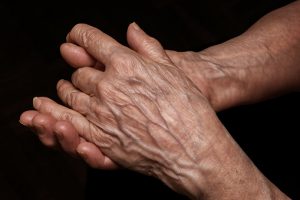 Bulging veins can be seen on your hands or practically any part of the body. They can be the result of a congenital defect of vein valves or due to conditions such as thrombophlebitis and varicose veins. Bulging veins can look unsightly, appearing swollen and possibly painful.
Bulging veins can be seen on your hands or practically any part of the body. They can be the result of a congenital defect of vein valves or due to conditions such as thrombophlebitis and varicose veins. Bulging veins can look unsightly, appearing swollen and possibly painful.
One of the most common reasons for bulging veins to develop is the prevention of flow through vein valves. These valves act as one-way flaps whose purpose is to prevent blood from flowing backward as it moves up the legs. When these valves do not function properly it allows for blood to pool and veins to enlarge.
What causes bulging veins?
Advertisement
Bulging veins can be the result of a number of different conditions, some rare and others quite common. The following are some causes:
- Varicose veins: A common cause of bulging veins that appear purple or blue in color. The veins themselves are distorted and in disarray as they bulge from the skin. This makes varicose veins quite obvious. They often occur in the legs and feet but can develop anywhere on the body. Varicose veins may become painful after prolonged sitting or standing.
- Venous insufficiency: Due to vein valves not working, as they are combined with vessel wall weakening. This leads to blood pooling inside the vein. This condition can result in varicose veins.
- Pregnancy: A main risk factor for the development of varicose veins, pregnancy puts pressure on veins, making it harder for blood flow to get back to the heart. A normal consequence of pregnancy is increased blood volume, which further compounds this issue.
- Older age: Over time, the muscle and tissue that make up the vein wall grow weaker. This allows for an increase chance for blood to pool, developing bulging veins.
- Thrombophlebitis: Blood clots in the vein can lead said vein to budge. These blood clots commonly form in the leg and have the potential for breaking off, flowing to the lung, causing a condition called pulmonary embolism.
Symptoms that can accompany bulging veins
Bulging veins found in the legs may be accompanied by the following symptoms:
- Aching pain that may get worse after sitting or standing for a long time
- Darkening of the skin
- Feeling of heaviness in legs
- Rash that is itchy or irritated
- Swelling
- Throbbing or cramping
Other symptoms may include:
- Skin ulcers near the ankle, and slow-healing wounds (commonly seen with diabetes)
- Increased weight and inactivity (commonly seen with obesity)
- Increased weight, increased blood volume, and pressure in abdomen (commonly seen with pregnancy)
- Inflammation, pain, and redness or warmth of the skin in the affected area (commonly seen with thrombophlebitis)
How to get rid of bulging veins
Bulging veins can be a sign of a more serious underlying condition, so it is recommended to see a doctor in order to get an accurate diagnosis before trying any sort of remedy. Once you have successfully discovered what your particular case of bulging veins is caused by, your doctor will likely prescribe the best course of action. It is important to note that bulging veins that develop during the course of pregnancy will often go away after three months to a year after delivery.
Other causes of bulging veins may be treated with the following:
- Lifestyle changes: Eating healthy, watching your weight, exercising on a regular basis, and avoiding standing or sitting for extended periods of time can all help you prevent the development of bulging veins
- Compression stockings: Designed to help promote the flow of blood from the legs back up to the heart, compression stockings can be a great choice for preventing bulging veins. They can be purchased at medical supply stores or your local pharmacy.
- Sclerotherapy: This involves the injection of a special solution that causes the vein to form scar tissue and close off. It is not harmful to the vessels, as the blood flow is simply rerouted using adjacent blood vessels.
- Laser surgery: A surgeon can use this treatment to close off veins with bursts of laser light. This causes varicose veins to slowly fade and disappear. This procedure does not involve any incisions or needles.
- Vein stripping: Another surgical procedure that removes varicose veins through very small incisions in the skin.
- Ambulatory phlebectomy: Similar to vein stripping, this procedure involves a surgeon making several small punctures in the skin and removes varicose veins. It can be done as an outpatient.
- Endoscopic vein surgery: Used during serious cases of varicose veins, endoscopic surgery involves inserting a tiny video camera into the leg through an incision then removing the located varicose veins.
Related: Blue veins on chest: Cause and treatment
